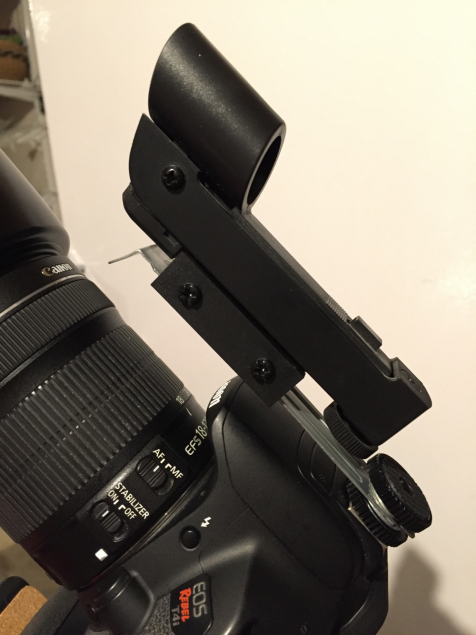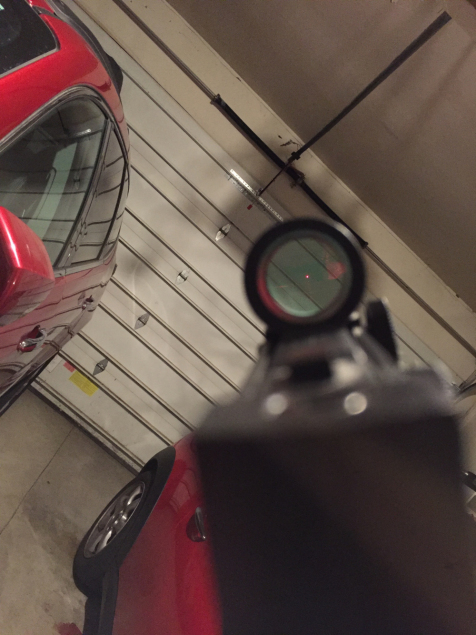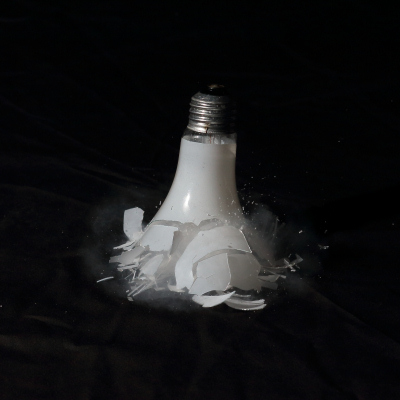_sml.jpg)
The Andromeda Galaxy is the farthest object I have ever photographed in some level of detail. It is 2.3 million light years away, which works out to fifteen million-trillion miles. How can I take a picture of something so far away with only a moderate telephoto lens? Answer: It's big. Monstrously so. Andromeda is twice the diameter of our own galaxy. In our sky, the neighboring galaxy spans the width of four full moons side-by-side.
But it's faint. Andromeda is one of the few galaxies that can be "seen" with binoculars or even the naked eye, but it still only appears as a hard-to-see fuzzy smudge of light. When it comes to faint sky objects like other galaxies, the only way to get a good look at them is through photography -- like the photo above. (While recently visiting friends near Redmond Oregon, I took advantage of their dark-ish sky to shoot the picture through a providential hole in the encroaching cloud cover. Minutes afterward, the view was gone.)
To take a sharp photo of a faint sky object, it is necessary to track the apparent motion of the stars across the sky. Without star tracking, the 30-second galaxy exposure would look like this one where I had turned the tracking clock drive off:
_sml.jpg)
My first attempt at using star tracking for astrophotography was to piggyback the camera on my telescope, which has an equatorial mount designed specifically for tracking celestial objects:
It worked, allowing me to shoot a long-exposure version (thus low image noise, at ISO 100) of Jupiter and its four Galilean moons:
Here it is with the tracking clock drive off:
Unfortunately, the combined weight of the camera and telescope was too much for the mount to hold reliably. The solution was to take the telescope out of the equation, putting the camera directly on the equatorial mount. That amount of weight was easily handled by the mount:

But without something like a telescope to see precisely what the camera is pointing at, it’s impossible to aim accurately toward dim stars or faint-sky objects -- they are not visible in the camera’s viewfinder. To solve this problem, I mounted a red-dot finder scope onto the camera’s hotshoe:

A red-dot finder puts an apparent illuminated dot amid the stars showing precisely what the camera is pointing at. In case you haven’t seen one of these cool scopes, here is what it looks like through the glass:

*****
Of course, there are vastly better photos of the Andromeda Galaxy on the internet, some even taken with “amateur” equipment -- but much more expensive and sophisticated than mine. My favorite example of that category is physician Robert Gendler, who is world-renowned for his spectacular celestial images.
Will I ever get deep sky astronomy shots like Gendler's? Definitely not. Please allow me to wax philosophically for a bit. My photos may get better over time, but I don’t have the time or resources needed to get really good at astrophotography. It’s mostly a choice of course. With photographic interests all over the map, my decision is to be “Jack of all Trades, Master of None.” You can see this in my blog and Flickr site. It makes me sufficiently happy to know that an astrophotograph like the featured Andromeda image was captured myself, using my own camera.
But I also like the shattering light bulb:

...And the Retractable Landing Gear birds:
...And the Fire Flowers:

...Etc.
I enjoy getting to see these amazing things with my own eyes -- and then sharing them with others if they care.
So, to the handful of people out there following this blog, thanks for going on this scattered photographic journey with me. Perhaps one of you will be inspired by realizing that it does not require thousands of dollars’ worth of equipment to capture an image of something fifteen million-trillion miles away.
